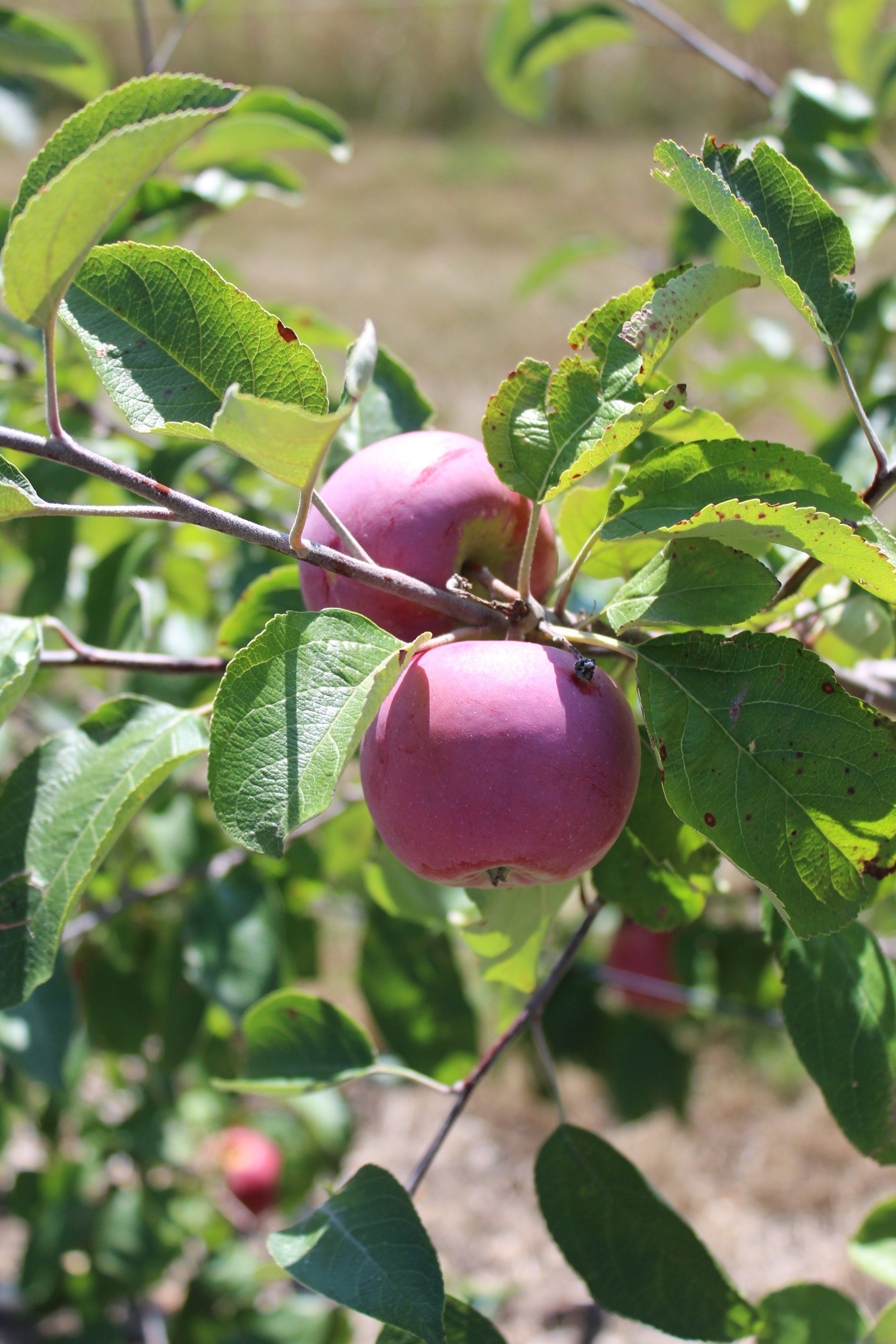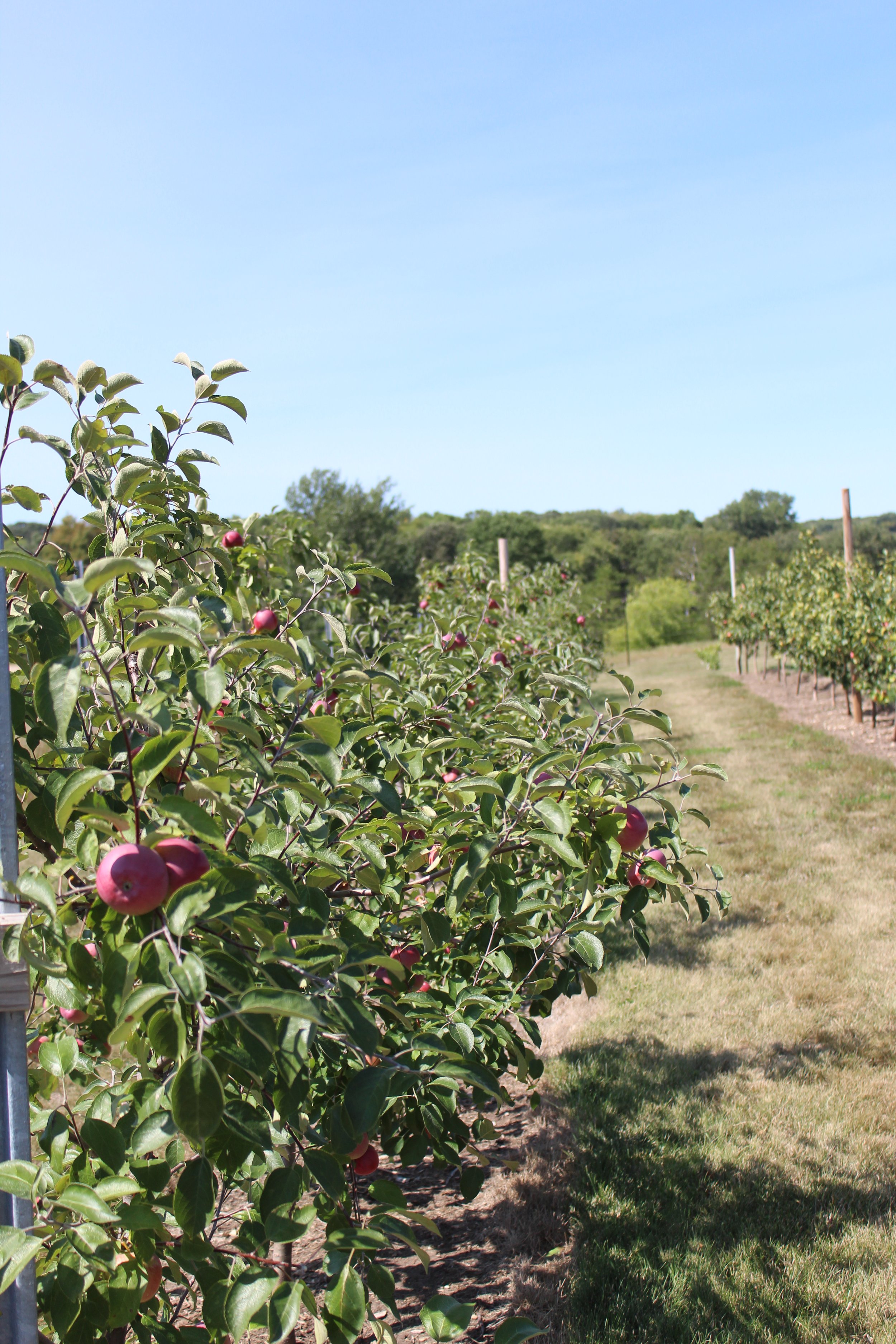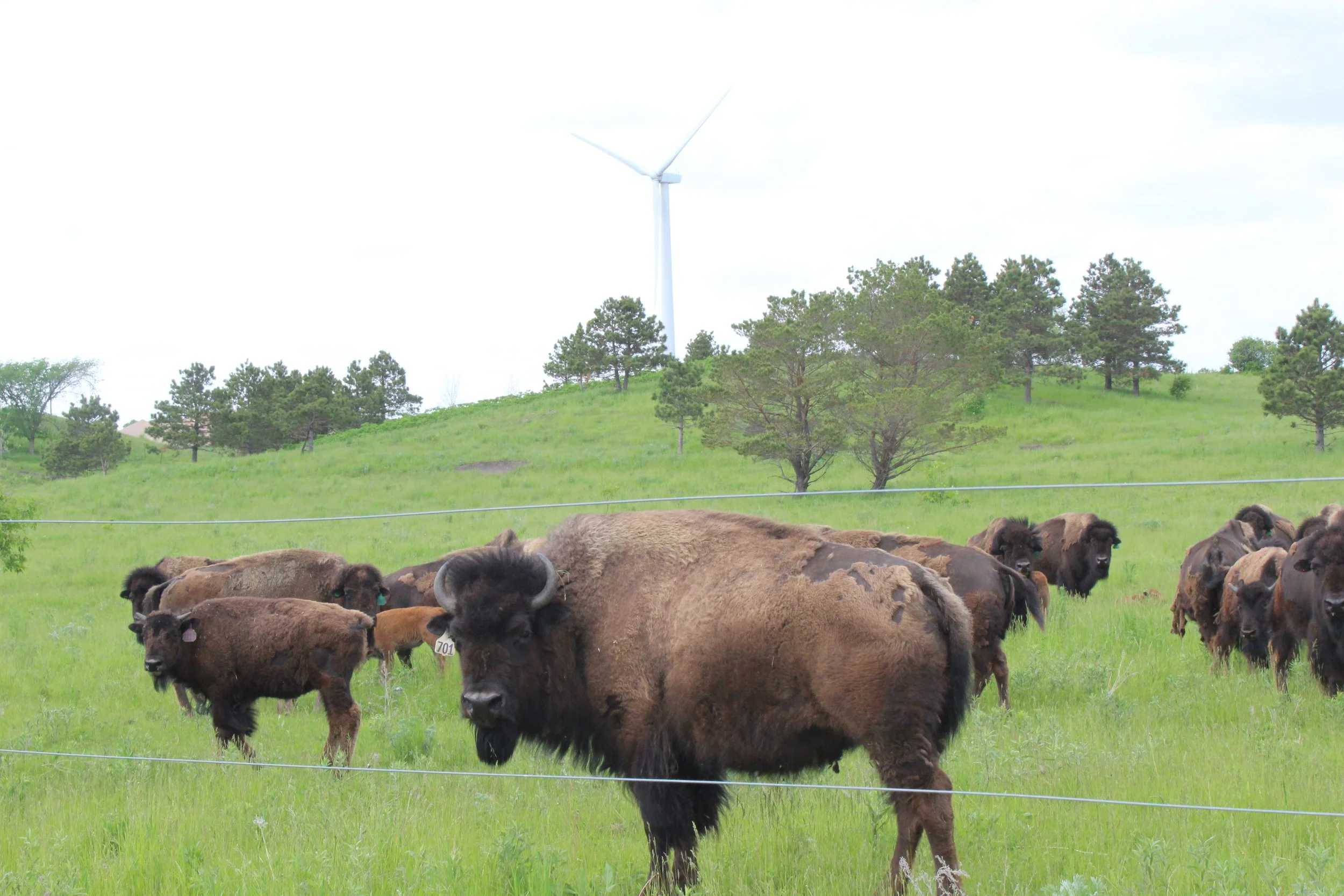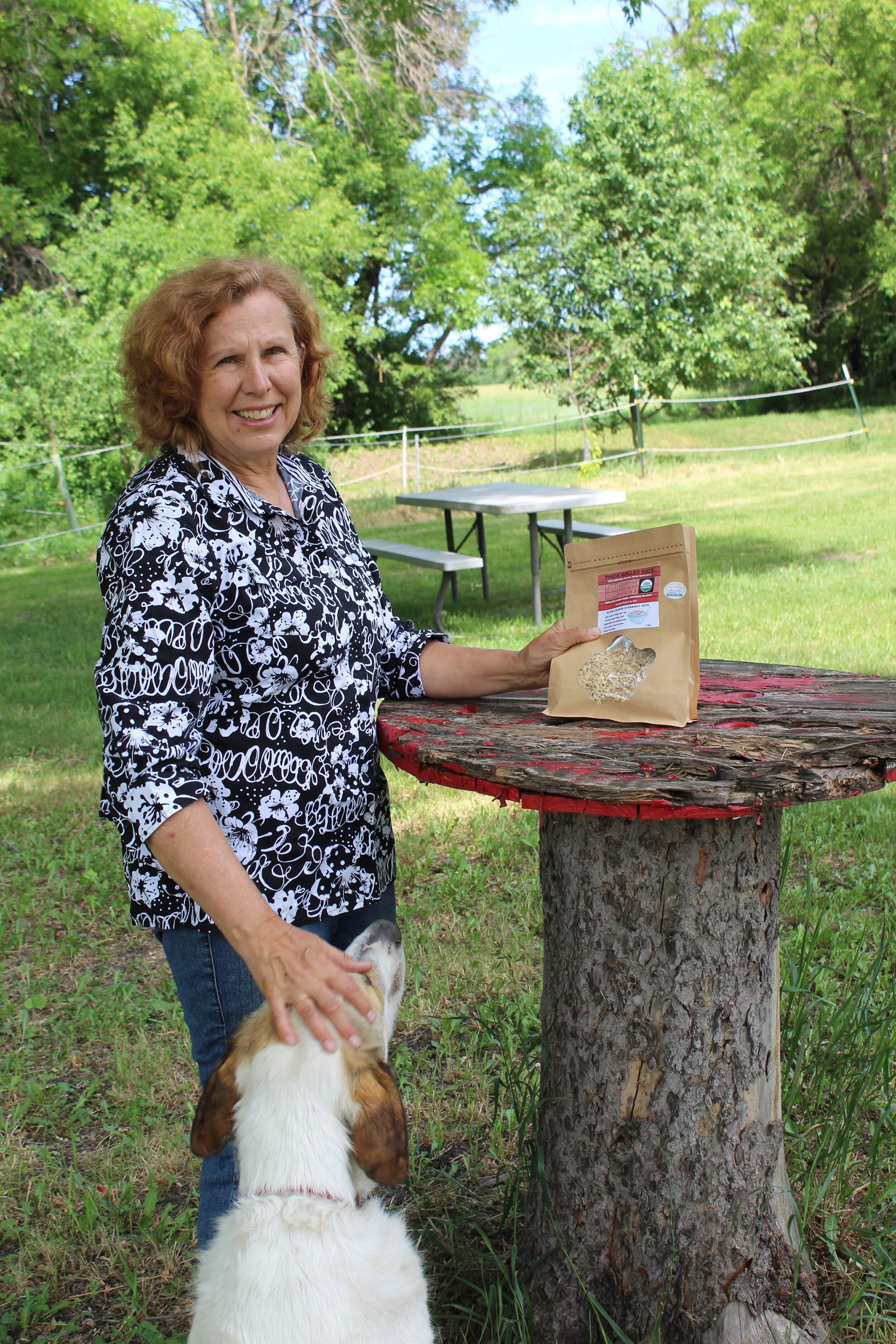A local apple a day...
It really wasn’t an (apple) pie in the sky idea for Nate Jensen of Fergus Falls, MN. His childhood dream was always to have his own orchard.
He made that a reality with his wife, Sarah when, in 2017, the couple purchased 25 acres on the town’s north end. A year later they began planting trees and now, on four acres of the property, have established several apple varieties including Honey Crisp, First Kiss, Cortland, Zestar and Honey Gold.
They call it Rivers Bend Orchard and can be found on Facebook.
They’ve planted every year except this one and will resume their yearly plantings next year, Nate said. All varieties are cold hardy with several varieties developed by the University of Minnesota.
A learning curve in orchard development
There is a learning curve to making the dream a reality, Nate said.
“I did a lot of homework and led by trial and error,” he said. “When we bought the property, it was prairie grass, It was a lot of prep work. We took soil samples, fertilized and got the correct nutrients for apple trees.”
There is a learning curve to making the dream a reality, Nate said. He researched varieties and how to care for the trees. The soil was tested to make sure it had the right minerals and nutrients for apple tree growth and they learned about the best pruning methods.
The soil type is sandy loam which is good for apple trees, he said. The land’s southern exposure also adds warmth in winter and has good soil drainage.
A drip irrigation system ensures trees receive enough water. That’s especially crucial during as the trees are developing in June and July.
“If you don’t get enough water, the quality of your apples comes down,” he said.
Normally apple trees may grow to about 25 feet tall, but these are dwarf trees. They will brow to about.7 to 8 feet high and are planted about 5 feet apart, he said.
“Normally a full size apple tree will grow to 25 feet tall,” he said. “These will brow to 7 to 8 feet tall and are planted about 5 feet apart.”
It’s a high density planting. Pruning is key to the growth and development of the orchard.
The Jensen’s have installed a high electric fence to keep animals at bay.
They began building a barn on the property in 2021. The frame was up but it was destroyed in a storm.
“That’s a part of life in Minnesota,” Nate said. “It happens.”
They did get the structure up and now use it to store equipment and wash and bag apples for sale.
A family affair
It’s a family affair which includes their five children. The property gives them ample space to play, but also an opportunity to learn about planting, growing and the care of the trees as well as learning about the business.
“I want the kids to learn that things don’t always come easy,” he said. “You can do everything right and work hard and then get hail.”
And they experience the joy of a good growing season as well.
While they had considered raising the apples as organic, the couple was concerned about pests. They monitor the trees and apple development closely taking care to spot any pests like bottling moths which will lay their eggs not he leaves and eat the seeds of the apples, he said. He did spray for the moths last July.
Training the trees
The Jensens do stake trees. The method is cost effective and, by staking them, they can train the plants to have lateral branches which is best for growing poles.
Each tree could produce 100 pounds of apples. If there are 600 trees, those trees could generate 60,000 pounds, he said. Their goal is to have a 30 to 50 pound average per tree.
Contact the Jensens at Rivers Bend Orchard
Want to learn more?
Check out their Facebook page at Rivers Bend Orchard. They respond quickly and give updates on the growing season and when varieties are available for purchase.
What’s the difference with the varieties they grow?
Honeycrisp - Developed by the Minnesota Agricultural Experiment Station’s Horticultural Research Center at the University of Minnesota, it as designated in 1974 and released in 1991. The Honeycrisps, once slated to be discarded, has proudly become a prized commercial commodity as its sweetness, firmness and tartness make it an ideal apple for eating raw. The apple wasn’t bred to grow, store air ship well. It was bred for taste: crisp with balanced sweetness and acidity.
It has a relatively long shelf file when stored in cool, dry conditions. A large-sized honey crisp will contain about 113 calories.
First Kiss - Bred to have Honeycrisp juiciness and refreshing tartness, it was also bred to be one of the first apples to ripen in the fall. Their very crisp texture along with tart to well-bahalnced flavor offers and incredible eating experience.
This variety has great parentage as a cross between the U of M’s Honeycrisp apple and are a variety from the University of Arkansas. This is a great eating apple that is available earlier in the season and is developed for cooler climates. It also has an unusually long storage life for early ripening variety and may require attention to established cultural practices to control biennial learning and fruit drop in some environments.
This variety typically ripens in mid-to-late August - the very beginning of the apple season.
Cortland - Cortland ranks among the 15 most popular apples in the U.S. It was first produced at the New York State Agricultural Experiment Station in Geneva, NY in 1898. They are named for Cortland County in New York State and are among the most commonly produced apples in the state of New York. They make a great fit in Minnesota as well.
The Cortland is a cross between a McIntosh and a Ben Davis apple. It is a soft apple though not quite a s soft as a McIntosh. Like a McIntosh, however, it can be used in many ways from eating, baking and cooking.
It is a great apple for recipes calling for fresh apples and is also great for fruit salads or fruit kabobs.
It has a sweet-tart flavor. But should be eaten as son after being picked as the flavor will fade quickly as well as its crispness.
Cortland apples can be stored for up to 3 to 4 months in a cool, dry place. And, when cut up, can be frozen for use in apples and other baking products.
Zestar - Another Minnesota apple cultivar, this apple variety was released in 1999. It has a sweet and tangy taste with accents of brown sugar. It is best used for fresh eating and can also be used in a variety of baked goods, sauces, desserts and salads. It pairs well with foods like walnuts, cinnamon, cheddar cheeses and brown sugar.
The apple can be stored up to two months with or without refrigeration. The apple’s flavors are known to intensify when kept at room temperature.
Honey Gold - Yet another Minnesota developed apple. It is well suited for northern cold climates and is a cross between a Golden Delicious and a Haralson. This apple keeps up to three months and is best used fresh for eating and salads and is also recommended for baking,.
This is a dessert type apple that works well for juicing plus for salads and also eating fresh.
In taste, it is similar to a Golden Delicious, but is sweeter and has a nice crisp texture.
These apples make a hearty applesauce and add interest to sales of all types including chicken salad.
Honey Gold is typically store for up to three months in cold storage.
Check out Rivers Bend Orchard on Facebook.








